This story originally ran on WRN on March 18, 2011. You dont have to be a dual sport rider to appreciate the nuggets of wisdom in this article. Theres good advice here for anyone faced with challenges when trying to accomplish something.
“Been there, done that.” I was saying that a lot when it came to planning activities around my motorcycle. Three years ago, I was burned out on motorcycle riding. I’d been working in motorcycling for a very long decade. When I was not writing about motorcycling, I was riding a motorcycle, and if I was not in my office talking motorcycles, I was traveling to an event to talk motorcycles. It was motorcycling 24-7. I’d been riding for almost 20 years and—dare I say—my enthusiasm was waning.
Women Riders Now E-Newsletter
Stay up-to-date on all things motorcycle! Latest gear, bikes and products reviews. Travel ideas, great product giveaways, and more.
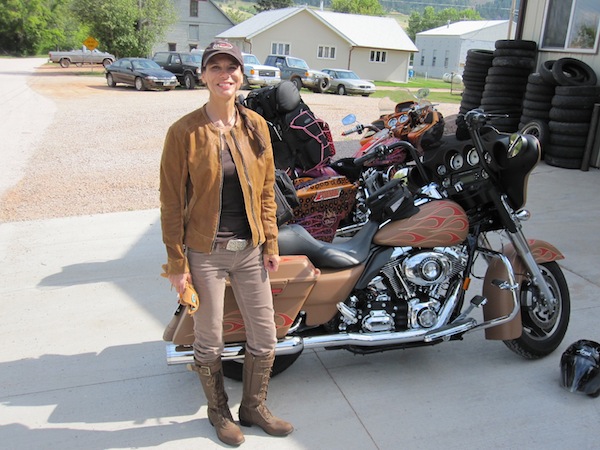
I needed a new challenge, something to jump-start my mental motorcycling battery. I needed to get excited, to stretch my motorcycling boundaries. I needed something to get my adrenaline pumping again. I could feel that daring side of me slowly escaping my midlife psyche. Parachute out of an airplane? Don’t think so. Climb Mt. McKinley? Not on your life. Jump off a cliff to go hang gliding? Yeah, right. These are all activities I’d have engaged in 10 years prior, but the aging, mature mind has a way of messing with your bold plans if you don’t get around to doing them when mortality is not even a thought in your brain.
“Dual-sport,” I wisecracked.
“The die-hard street rider in meimmediately dismissed
the notion of riding on a dusty trail…”
In the fall of 2008, I was presented with the opportunity to participate in an eight-day dual-sport ride. “Dual-sport,” I wisecracked. “Isn’t that riding in the dirt where you have to wear all that safety gear?” The die-hard street rider in me immediately dismissed the notion of riding on a dusty trail where I’d get dirty. But a few days later I was talking with tour organizer Sue Slate about what the experience could mean to me on a larger level, and I realized this off-road adventure might just be what I needed to reignite the two-wheeled fire in me.
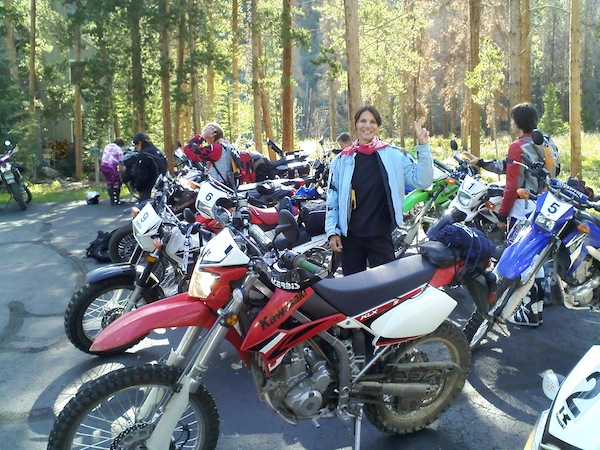
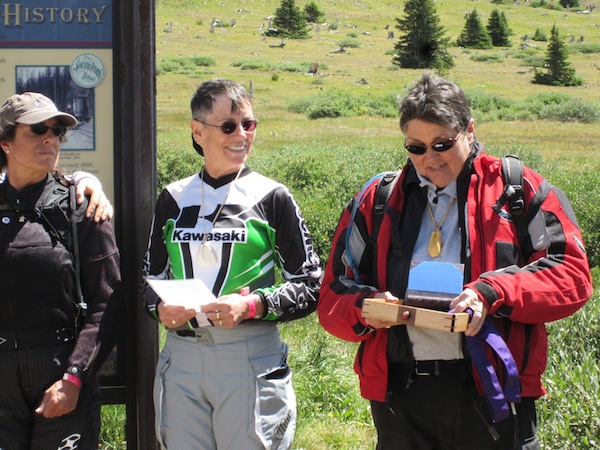
I definitely had some trepidation about going on this dual-sport tour, called adventure touring these days. The three occasions I’d been on a dirt bike were not thrilling enough to get me running out to buy one. Typical street rider, I am. I had not been able to get accustomed to the tires spinning out in the dirt beneath me. I like my ground hard and stable. I’d later learn that controlling the back wheel on soft ground is part of the off-road experience, and is what you eventually learn to master.
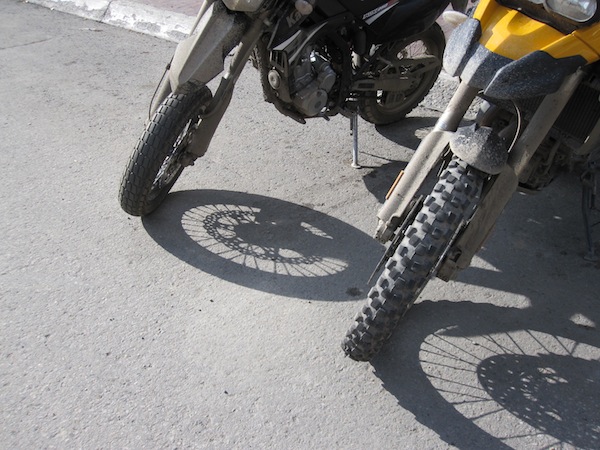
Sue talked about riding over 12,000-foot mountain passes in Colorado (my second favorite state after my home state of Montana), venturing off the beaten path (something I can appreciate living in Montana), staying in cute rustic lodges (I love rustic!), riding with 12 other women who are all street riders (hey, we’re all about women riders at Women Riders Now), getting a lesson on dual-sporting before hitting the trails (training before the ride, right on!) and most importantly, raising money for breast and gynecological cancers research. I could appreciate the philanthropic aspect of the ride, as I had been feeling like I should be giving back in a bigger way through my motorcycling life. Could this adventure tour possibly be the medicine to mend my motorcycling malaise?
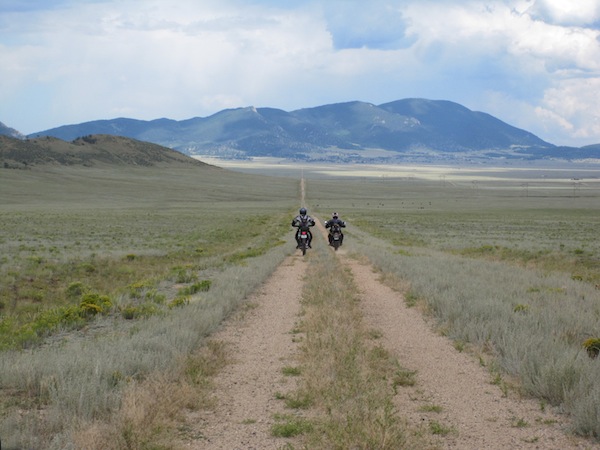 |
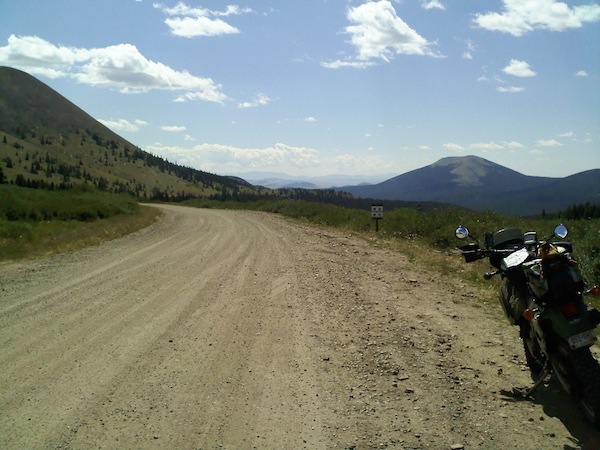 |
I signed up for what was called Adventure for the Cures Dirty Dozen Ride, taking place over eight days in Colorado in August 2009. Dirty Dozen because there were 12 women and we’d be riding in the dirt—and getting dirty. Boy, did we get dirty.
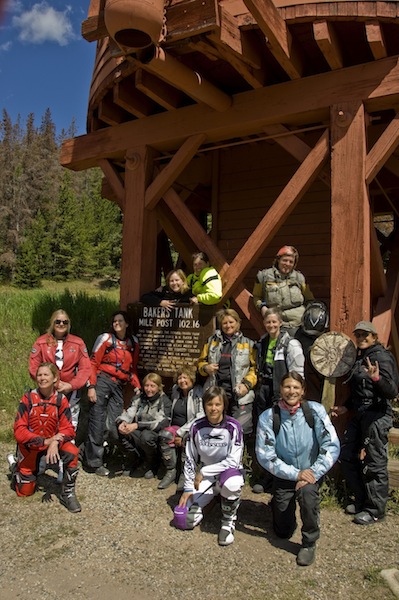
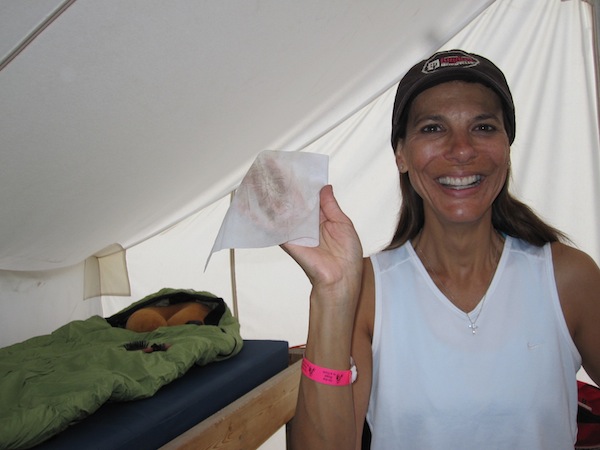
Dual-sport means the motorcycles are equipped to ride on dirt and pavement. The dirt trails are the reason for the ride; the pavement is just a way to get to and from those trails.
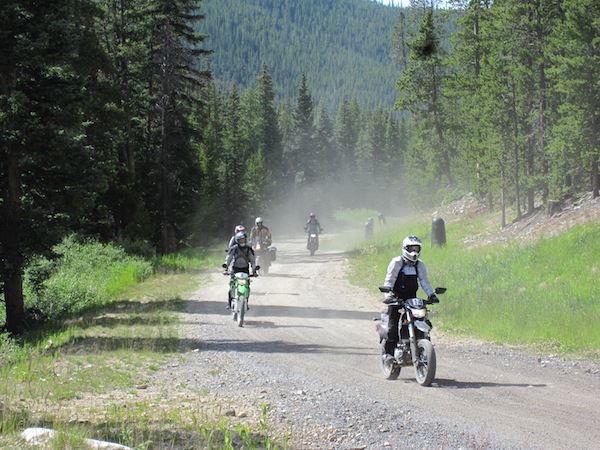
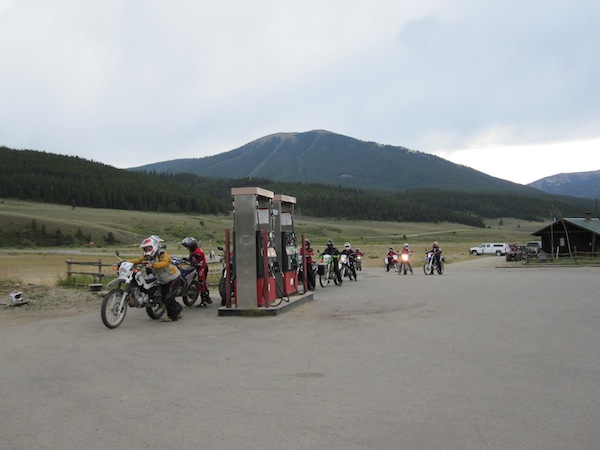
The trails are where the fun and adventure happens. If you ride on trails in out-of-the-way places, like we did in the Colorado Rockies, you’ll find there are no other people around. Solitude abounds.
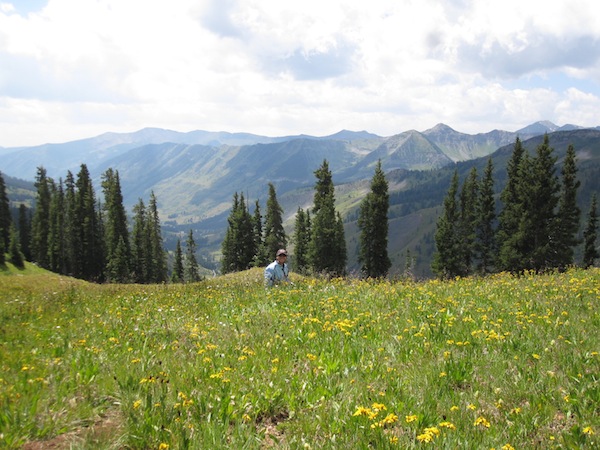
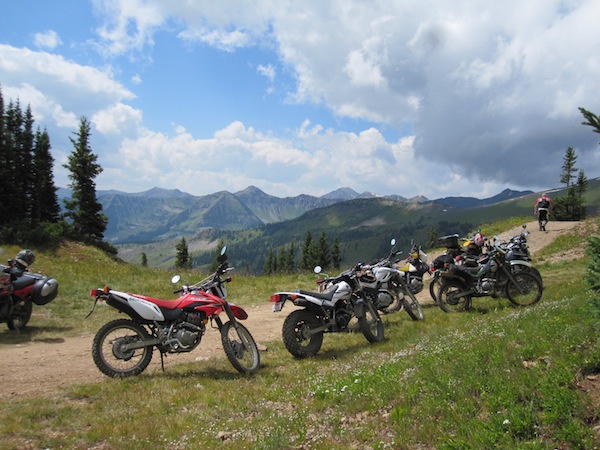
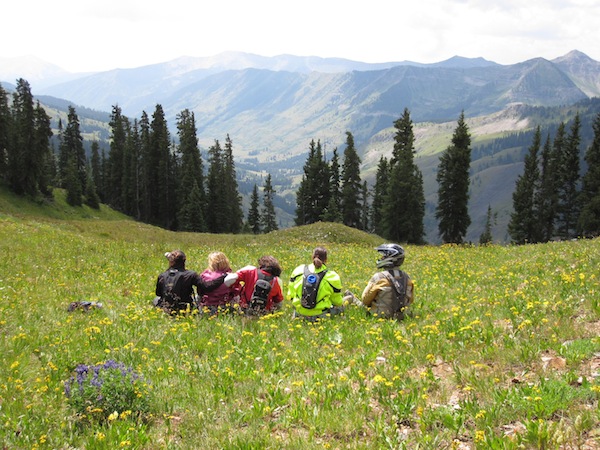
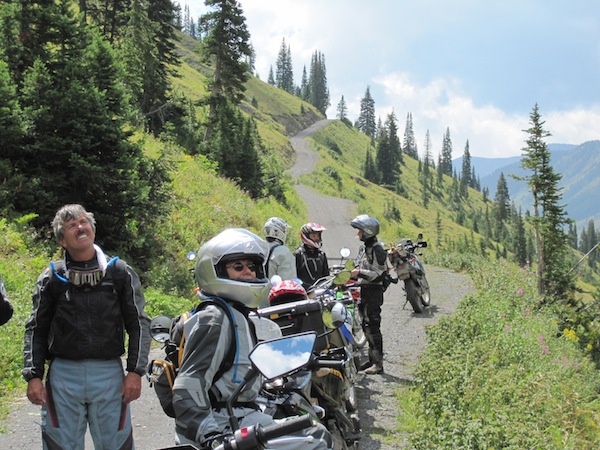
I enjoy hiking and getting out into nature. Think of dual-sport as a way to hike to peaks and valleys in a much quicker turnaround period. What would take you two days to trek on foot could take you just one day to ride.
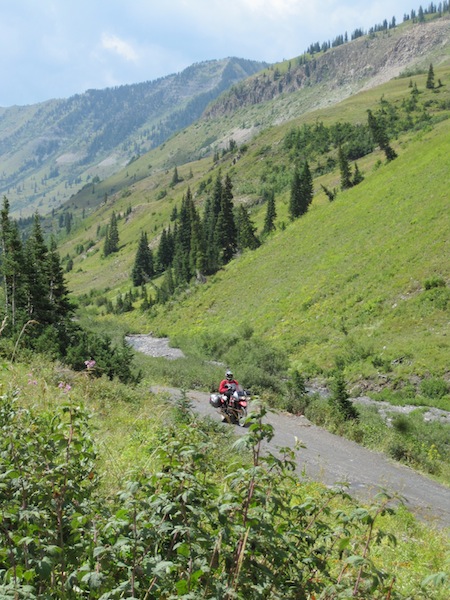
After getting a day’s lesson on the fine art of riding a dual-sport motorcycle in gravel, dirt and sand from on-site instructors Andrea Beach and Bonnie Warch, owners of Southern California dirt-bike riding school Coach 2 Ride, we newly minted dual-sport riders embarked on pathways that would take us on everything from flat dirt roads to steep, gnarly, rocky, rutted one-track trails.
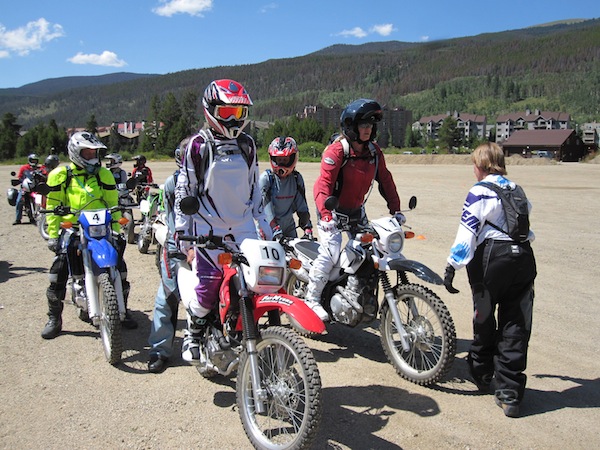
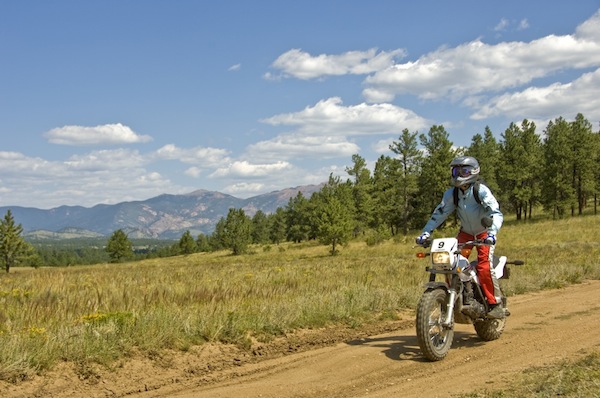
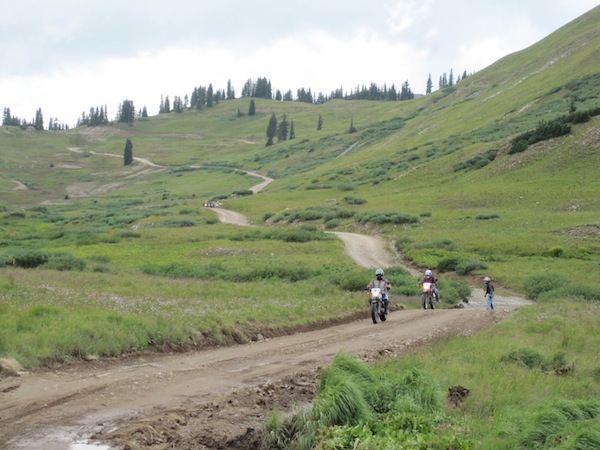
“…the rest of the group was ahead of me because I was being a slowpoke.”
So How Did I Do?
I was OK on the flat gravel areas—heck, give me a hill or two to really get my blood pumping. It was the gravely, rutted routes and the sink-your-tires-in-deep sandy stuff that pushed me to the edge—literally, one time. I was in the wrong gear (second instead of first—yes, you ride in that low of a gear a lot of time) going up a steep, rutted-out road, and when I twisted the throttle too much, the surge of power sent the little 200cc motorcycle flying out from beneath me. VroooOOOmmm—I can remember it like it was yesterday, with me stumbling over onto the hard surface, witnessing the bike flying through the air over the uphill edge of the trail (versus down the hill), coming to rest in a twisted position in the brush.
I was alone; the rest of the group was ahead of me because I was being a slowpoke. I stared at the bike in its contorted position and sighed. Ho hum. I was OK. I didn’t get hurt. You can be OK when you “crash” a dual-sport because you’re wearing proper safety gear and usually going slow. Crashes are usually just mishaps from which you can recover quickly. However, I had not yet mastered the skill of maneuvering a fallen bike down from a hillside riddled with logs and rocks on my own. You eventually learn how to do that. I was going to have to wait until someone came back to assist me.
“Like a lot of women, I’m hard on myself.”
A few minutes later, Andrea rolled down the hill on her dual-sport and helped me right my bike, easing it back down onto the steep, rocky trail. I was too shaken to steady the bike enough on the narrow, slick rock surface to straddle it and continue riding it up the hill, so pint-sized Andrea hopped on that high-suspension motorcycle and zoomed up the rest of the trail like she was riding on pavement. My bruised ego and me hoofed it up the remainder of the way.

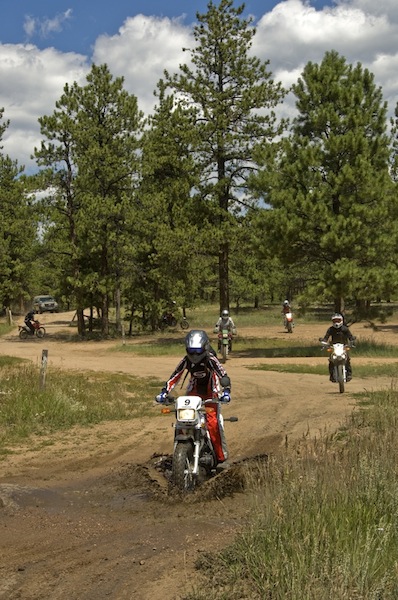
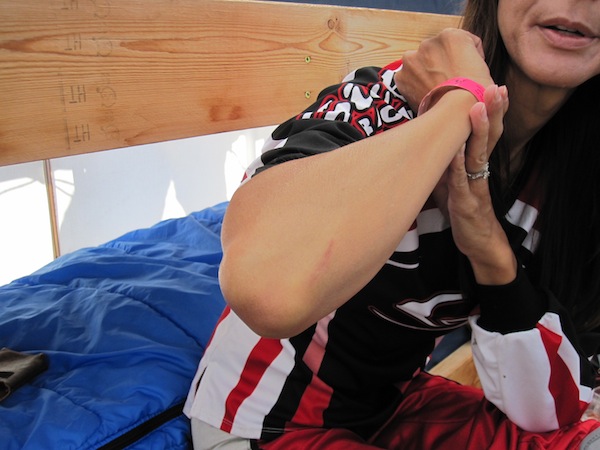
This motorcycling dual sport adventure took me to places in my head I didn’t want to go at my age, places I’d been shying away from quite frankly. Falling off the bike, stalling out the bike, being in the “slow” group—these things made me feel defeated and beaten down. I didn’t like that feeling, so I’d been avoiding activities in the last few years that made me feel that way. I knew what I was capable of, so that’s about all I had been doing—staying within my shrinking comfort zone.
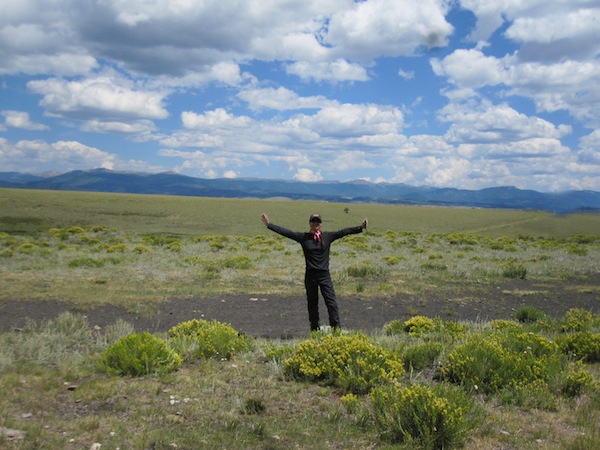
On this ride, my body took a bit of a beating, but it was nothing some ice, ibuprofen and a few bandages couldn’t fix. What was aching most was my ego, that stupid vanity-producing Freudian part of our psyche that gets us into trouble more with ourselves than others most of the time. “C’mon, Genevieve, get over it,” I kept demanding of myself. The other riders, who were also falling off their motorcycles, were reassuring me that falling is part of riding in the dirt. But why was I feeling so crappy inside?
I’ll tell you why. I’d done a lot of things in motorcycling, and I got good at a lot of it. I accomplished what I set out to do and did those things quite successfully. Riding in the dirt, something I’d avoided all this time, was pushing me beyond my comfort zone, forcing me to dig deep and muster up the strength and courage to get back on the bike despite the bruised ego. My body is strong. I make a point of keeping it strong, part of how I’m embracing the aging process. But my mind, which had started getting lazy and complacent in the last few years, needed a kick in the you-know-what.
Mental strength is what keeps us going when the physical part is on the brink of failing.
Mental muscle is what keeps people alive in dire situations.
Mental mightiness is what’s needed when we feel like giving up—or giving in.
I was getting mad and disgusted with my performance, and my bruised ego was feeding that destructive cycle. I needed to get a grip, quit with the egotistical thoughts and find joy in all that I was accomplishing.
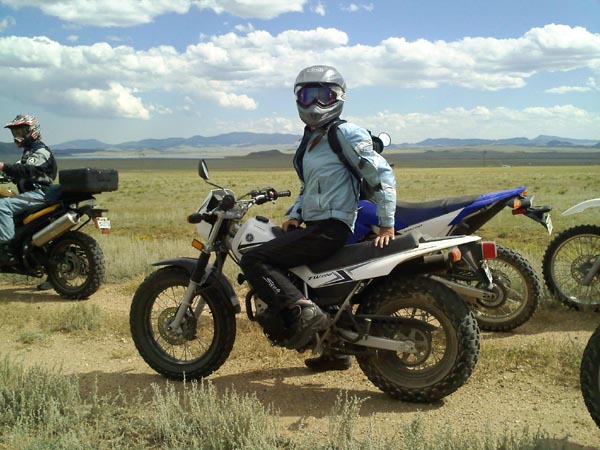
Now, 20 months later, thankfully I’ve moved past all of this. I can now articulate how I was feeling and be honest about it. I realize, too, that this is how many women riders feel when they take up street riding for the first time. I have a whole section in Women Riders Now about failing the MSF class and getting back in the saddle despite feelings of defeat, as well as falling off the motorcycle, dropping the motorcycle and all the other actions that make women adopt self-defeating attitudes and give up far too early. The Beginner’s Guide is also filled with articles with advice on how to overcome some of these challenges.
“…I should celebrate my accomplishments and find peace in them…”
Like a lot of women, I’m hard on myself. I’m quick to criticize when I struggle with something. But as I’ve reached middle age (isn’t that what they call the mid-40s?), I realize that instead of being critical of myself—which can be so self destructive—I should celebrate my accomplishments and find peace in them, instead of using them as a stepping stone to push myself unnecessarily to achieve more and be better. Constantly striving to be better never gets you anywhere because you just keep wanting to top yourself—you can never enjoy being present in the moment of your accomplishment or appreciate being really good at what you do. Get what I mean?
So if you’re feeling like me, dual-sport riding may be just what you need to get excited about life and infuse you with a renewed sense of yourself. I was honored to do this ride with Sue Slate and Gin Shear, two of the most self-less, endearing women you’ll ever meet in motorcycling. I will always be grateful to them for this experience—one that gave me much more than I could have imagined.
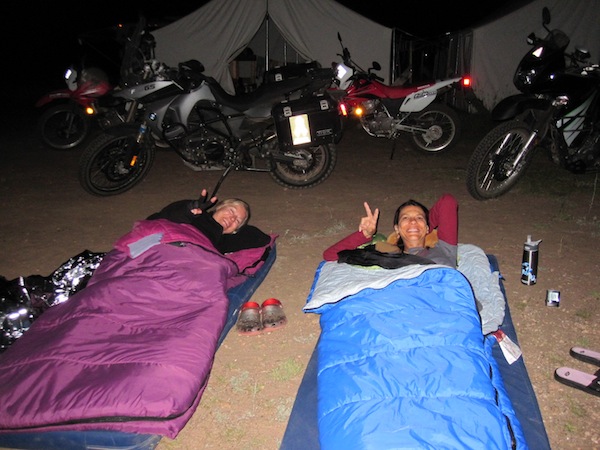
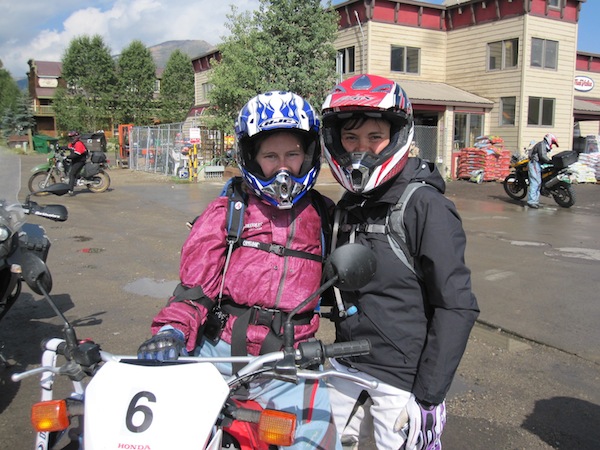 |
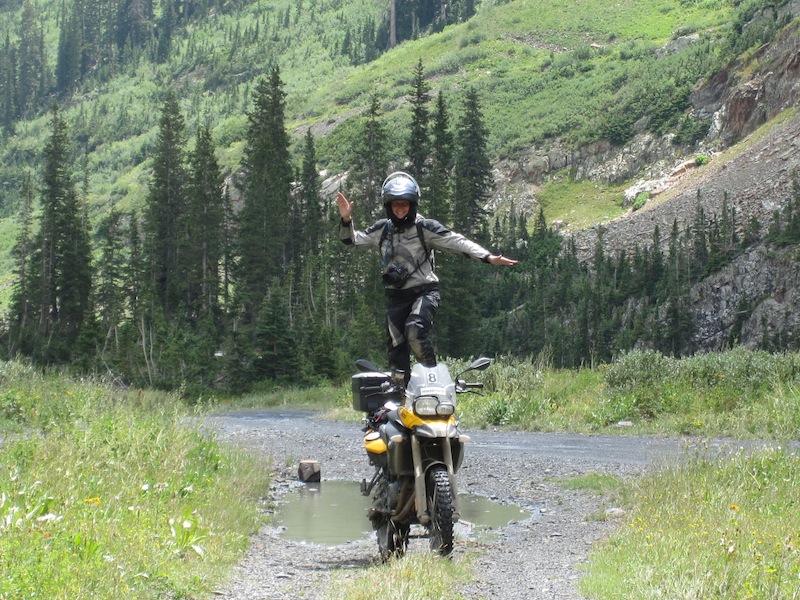 |
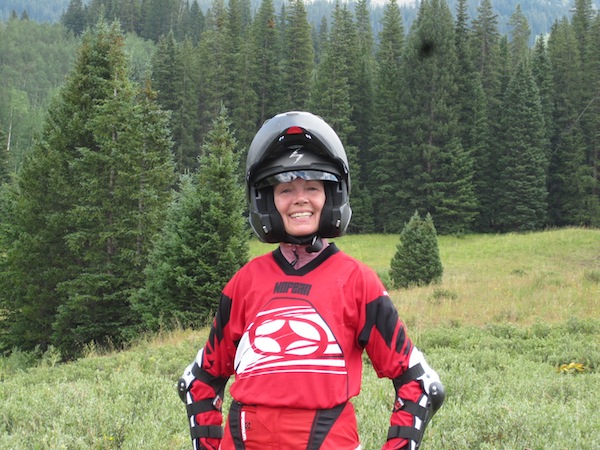 |
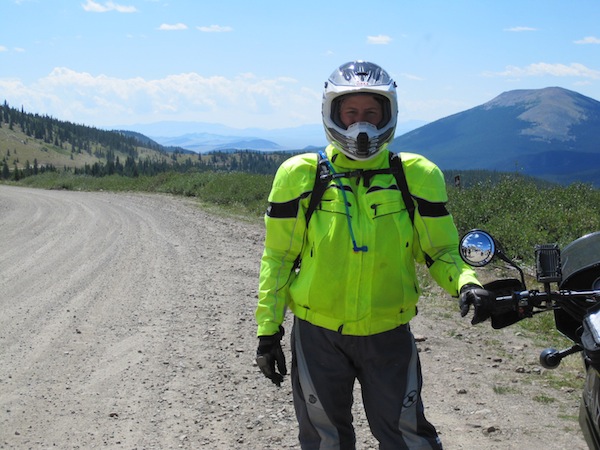 |
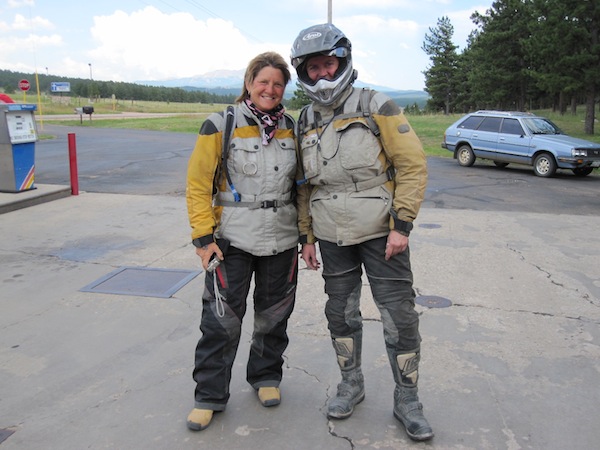 |
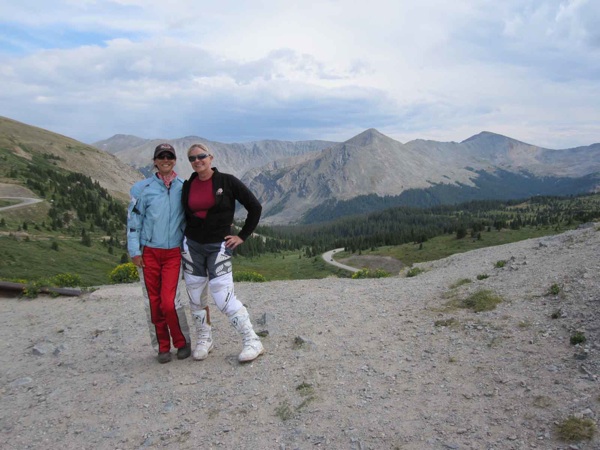 |
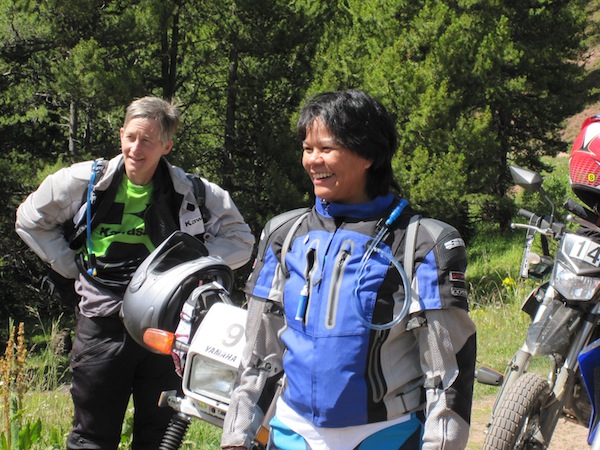 |
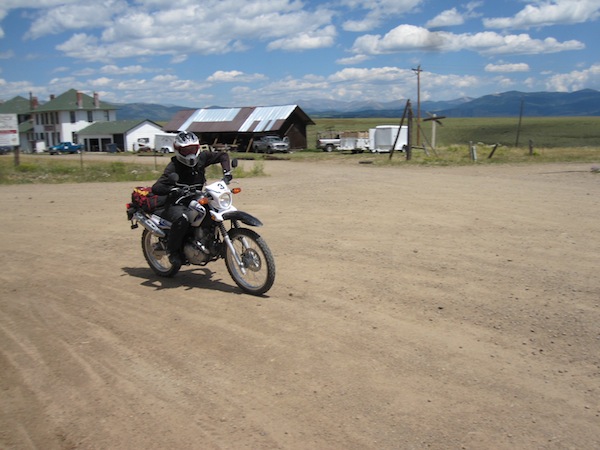 |
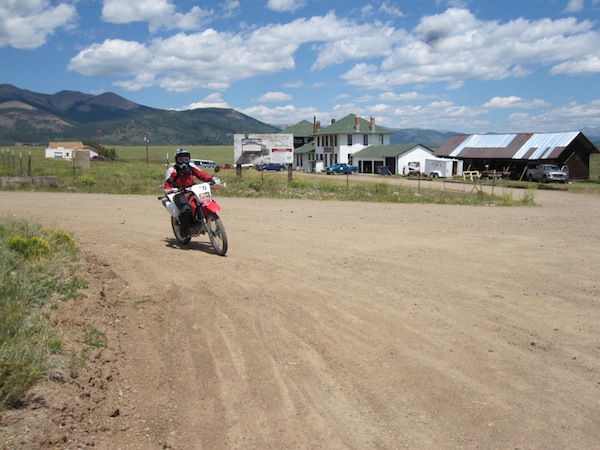 |
Meet The Support Crew
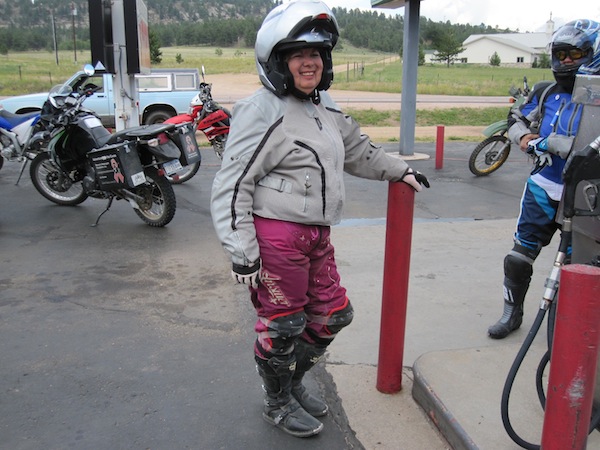 |
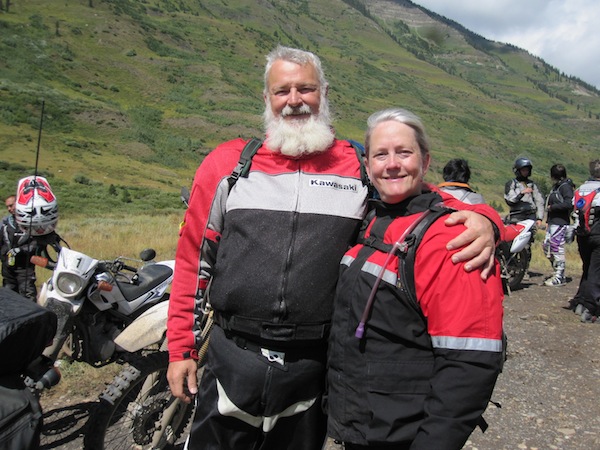 |
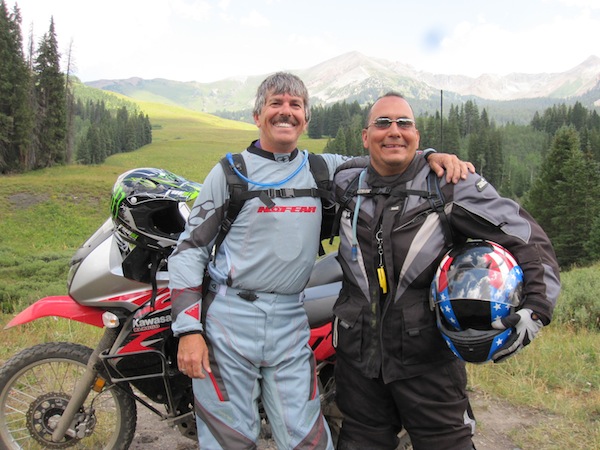 |
I was asked to be part of the Dirty Dozen so I could write about it and inspire other street riders to consider dual-sporting. I hope I’ve done that with my story. Here are some more facts about our ride I feel are important to share:
1. The Dirty Dozen could not have happened without the generous support of our sponsors. BMW, Buell, Fay Myers dealership in Colorado, Harley-Davidson, American Honda, Kawasaki and Yamaha graciously provided the motorcycles used by the riders and staff. Progressive Insurance, the presenting sponsor for all WMF programs, assisted financially.
2. The Dirty Dozen women raised more than $40,000, which was donated to two organizations: the Gynecologic Cancer Foundation and the Dr. Susan Love Research Foundation. Canadian Dirty Dozer Rider Neda Skific-Lee raised another $3,000-plus on behalf of the Canadian Breast Cancer Foundation. The grand total raised surpassed the group’s fund-raising goal by $18,000.
3. Since 1996, WMF has been hosting rides to eradicate breast cancer. For the 2009 ride, WMF began addressing research needs for other gynecologic cancers, especially ovarian cancer. To help keep the riders focused on the mission of the ride, at the end of each riding day, a short, symbolic medallion pass ceremony takes place with a four-piece horseshoe medallion at the center of it.
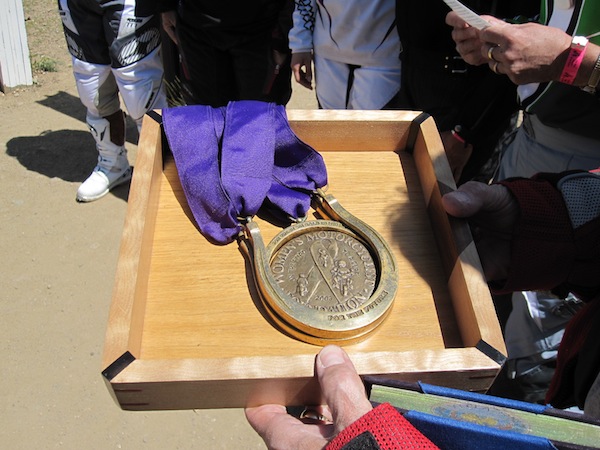
During the daily medallion pass ceremony, the incoming medallion pass team first assembles the medallion, reminding the group of the united front it will take to beat cancer into the history books. Then each piece is placed around the necks of four new riders, symbolizing the individual battles courageously waged at a very personal level by those in the throes of fighting cancer.
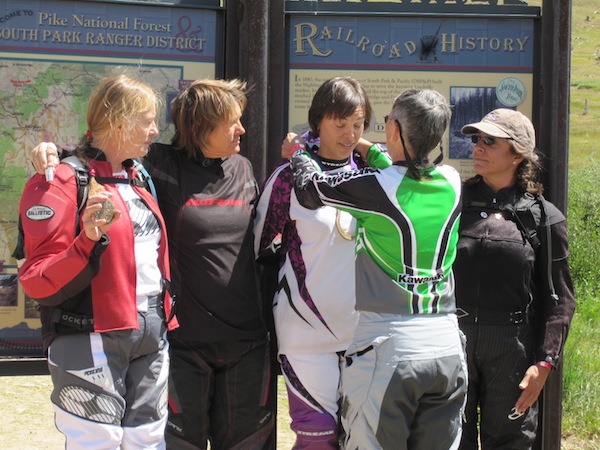
4. Statistics indicate that one in eight women will be diagnosed with breast cancer. Over the few months following the conclusion of our ride, two of the Dirty Dozen riders were diagnosed with breast cancer. Both had treatment, survived and are doing fine today.
Related Articles
Kicked out of MSF Class: Will I Ever Be Able to Ride!
You Flunked! Now What?
Beginner’s Guide to Riding in the Dirt
Resolve To Make Your Motorcycling Dreams Come True

Great piece! Sounds fantastic! I would love to do this! I started out learning to ride on dirt bikes as a teenager!
Great read! I am in the opposite situation as I am a hardcore dirt rider. I’ve even raced a few enduros. I just bought an 08 Harley Sportster 883L. I am starting a new adventure on the street with my hubby who bought a 1200 Sportster last summer and to be frank I’m scared! My comfort zone is dodging trees, gnarly tight trails, rock hills, sand galore (MI has a lot) roots, ruts, mud, you name it. It’s all I know. It’s my addiction.The street is a whole new ballgame. The street obstacles and crazy other people on the road is what gives me the fear. I love Harleys and couldn’t be more excited about my purchase. It was 15 below when I bought my bike last week and have to wait until spring to ride it. Anyway, kudos Genevieve for kicking butt in the dirt! God bless.
Awesome! Last year I also took some classes on adventure riding and I was amazed at what I could do. I feel like I have become a better rider all around because of this experience. I first got “hooked” when I took the Coach to Ride class that was offered at the Women and Motorcycling Conference in Carson City, NV. I was enthralled that it was possible to stand on the pegs and steer the bike. That experience was my inspiration to take more classes. Thank you for the article.PS. I also remember the Dirty Dozen at the Women and Motorcycling Conference in Keystone, CO, and stayed in the same place at the conference.
Wow, how inspiring! I have been riding for more than 40 years, first as a kid on dirtbikes and minibikes, and now I ride street bikes. I love riding, although many years of being a mom held me back. I’m now in my late 40s and want to ride an adventure as you did. You made me feel inspired today for what the future may hold for me.